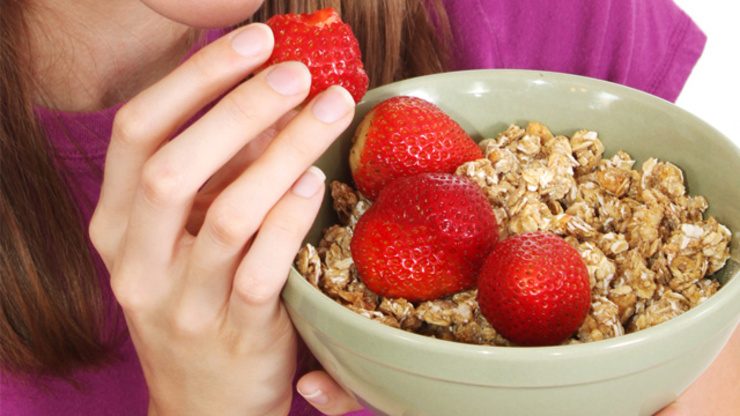SUMMARY
This is AI generated summarization, which may have errors. For context, always refer to the full article.

MANILA, Philippines – Global consumers spent $374 billion on snack foods annually between 2013 and 2014, a year-over-year increase of 2%, according to the Nielsen Global Survey of Snacking released on Tuesday, September 30.
Europe spent $167 billion while America contributed $124 billion to worldwide snack sales, but Southeast Asia’s developing nations are significantly adding to the category’s growth at a rate of 3.6% year-on-year, Nielsen said.
Nielsen said that snack foods spending would rise as the region welcomes almost 300 million new consumers in the next decade, rising income levels, and a burgeoning middle-class population who will fuel growth in the years ahead.
“Increased consumption and the expanding middle class are the two key reasons why developing countries in Southeast Asia are expected to fuel further growth of this category,” said Stuart Jamieson, Managing Director of Nielsen Philippines.
Aligning strategies with the growing middle-class and the consumers’ shifting taste and health considerations should be top of mind for snack food manufacturers to take a sizable bite of this opportunity, Jamieson said.
Shifting taste, going healthy
For Filipino respondents, snacking is viewed primarily as a source of nutrition (74%).
Indonesians, Malaysians, Singaporeans, and Vietnamese rank enjoyment as the foremost reason for snacking, while 8 out of 10 Thai consumers (79%) snack to satisfy a craving.
Similar with other regions, snacking in Southeast Asia is also considered as a moment for sharing with family and friends, thus creating opportunities to adjust packaging for single serves for snacking in between meals or family-size packs for sharing.
Although Filipino respondents ate a wide variety of snacks in the past 30 days, the survey revealed that they prefer bread/sandwich above other snack choices (31%), fresh fruit (20%), and chocolate (12%). (See Chart 1*)
| INDONESIA | MALAYSIA | PHILIPPINES | SINGAPORE | THAILAND | VIETNAM |
|---|---|---|---|---|---|
| Fresh fruit | Bread/sandwich | Bread/sandwich | Bread/sandwich | Fresh fruit | Fresh fruit |
| Vegetables | Fresh fruit | Fresh fruit | Fresh fruit | Chocolate | Yogurt |
| Chocolate | Chocolate | Chocolate | Chocolate | Fried Bananas | Chocolate |
“Cheat day” or a day for an occasional treat will always be a factor, Jamieson said.
“While the mindset of Filipino consumers toward snacking is focused on health with preference toward fresh snacks which offer health and nutrition benefits, they’re also looking for an occasional treat,” Jamieson said.
Jamieson added that snack manufacturers must innovate their offerings to incorporate the right balance of health and indulgence.
“A successful growth strategy means a product range that appeals to the taste and health preferences of the local consumers,” Jamieson stressed.
Filipinos also look for beneficial ingredients, rating fiber as the most important attribute in the snacks they eat (63%). They also prefer all natural ingredients (56%) and natural flavors (54%).
No artificial colors rank as the most important health attribute for Indonesians (56%), Malaysians (49%), and Thais (45%).
Three in 5 Vietnamese consumers (60%) prioritize all-natural ingredients in their snack choice, while low salt and no artificial colors top the list of snack preference for Singaporeans (34%). (See Chart 2)
| INDONESIA | MALAYSIA | PHILIPPINES | SINGAPORE | THAILAND | VIETNAM |
|---|---|---|---|---|---|
| No artificial colors | No artificial colors | High in fiber | Low salt/sodium | No artificial colors | All natural |
| High in fiber | No artificial flavors | All natural | No artificial colors | High in fiber | GMO free |
| No artificial flavors | Low/no sugar | Natural flavors | Low/no sugar Natural flavors High in fiber |
GMO free Low fat |
No artificial colors |
Purposeful and impulsive snackers
The survey also revealed that Filipinos, along with the Vietnamese, are the most environmentally-conscious consumers.
More than half of the Filipino respondents said it is very important that snacks include organic ingredients, and 40% prefer the use of local herbs. Vietnamese consumers (45%) say sustainable sourcing is important.
For Filipinos, there are 3 important taste/texture attributes in buying snacks. They must be fresh (75%), flavorful (65%), and juicy (54%). (See Chart 3)
| INDONESIA | MALAYSIA | PHILIPPINES | SINGAPORE | THAILAND | VIETNAM |
|---|---|---|---|---|---|
| Fresh | Fresh | Fresh | Fresh | Fresh | Fresh |
| Chewy Indulgent |
Indulgent | Flavorful | Flavorful | Flavorful | Flavorful |
| Crunchy | Flavorful | Juicy | Crispy | Fruity | Indulgent |
Filipino consumers also have a planned approach to their snack consumption, like buying snacks in the store aisle, planning their purchases before they get to the store, and having a few snacks they keep in rotation.
But Filipino consumers are also impulsive snackers. They try new snacks, buy a variety of snacks, and make unplanned snack purchases, Nielsen said. These spontaneous consumers often eat snacks as soon as they buy them and tend to buy snacks at the check-out counter.
“Consumers occupy two ends of the spectrum: purposeful at one end and impulsive on the other. Manufacturers should create opportunities through the strategic placement of snacks to ensure that they cater to both ends of the spectrum,” Jamieson said.
For purposeful snackers, manufacturers must clearly state product features such as sustainable sourcing and fair trade. Conversely, getting products in high visibility areas, particularly in front-of-store locations, is key to cornering the impulse-driven snack market, Jamieson pointed out.
The Nielsen Global Survey of Snacking polled more than 30,000 online consumers in 60 countries to identify which snacks are most popular around the world and which health, taste, and texture attributes are most important to the consumers. – Rappler.com
*Charts from The Nielsen Global Survey of Snacking
Girl eating strawberries and cereal image via Shutterstock
Add a comment
How does this make you feel?
There are no comments yet. Add your comment to start the conversation.